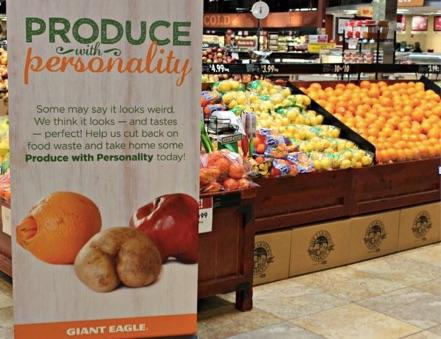Gnarly Fruit Paves Way for Ugly Fish Jerky in Battle to Curb Food Waste
By Dave Armon, 3BL Media CMO

Misshapen carrots, oranges with bulging navels and pockmarked pomegranates have debuted at the Whole Foods and Giant Eagle supermarket chains, giving U.S. consumers a wake-up call about the issue of food waste.
Shoppers at Intermarche in France and Asda in the UK are already buying tons of wonky fruit in a successful campaign to reduce the unnecessary disposal of produce that was fresh but lacking in aesthetic appeal.
In January, Shark Tank investor Robert Herjavec plunked down $100,000 to buy 10% Hungry Harvest, a for-profit company that delivers “recovered” fruits and vegetables to consumers while making matching donations to the needy.
Entrepreneurism in the world of wasted food has only just begun, predicts food activist Danielle Nierenberg, whose nonprofit Food Bank focuses on sustainable agriculture and food issues.
“A lot of the innovation is going to come from companies, and that is exciting,” Nierenberg told attendees of the Ceres Conference in Boston, adding that projects like turning fresh but unappealing fish into tasty, dried jerky would be profitable methods to teach consumers about the need to curb food waste. “Consumers really understand this issue.”
New public service announcements produced by the Ad Council for the National Resources Defense (NRDC) Council are encouraging people to eat more leftovers and to rely on their own senses to decide when food is spoiled, rather than blindly obeying “best by,” “sell by” and expiration dates, said Nierenberg.
Each year, 40 percent of food in the United States goes to waste, translating to $162 billion lost and wasted water, energy, fertilizers, cropland, and production costs, according to NRDC.
Food waste is the culprit for massive discharges of methane from landfills, where discarded food is a top contributor to the waste supply. Contrasting this with an epidemic of hunger – one in seven Americans don’t have a steady supply of food, according to NRDC – sharply cutting food waste is a major sustainability initiative.
Beyond food waste at the supermarket and consumer levels, Nierenberg said 13.8 billion tons of produce rots or is infested by insects because many of the world’s estimated 570 million farmers cannot get their crops to market in time. Better roads and more cold storage facilities would help, she said.
The plight of farmers also worries executives at giant food companies like General Mills. The Minneapolis-based company turns 150 years old this year and is examining its supply chain so it can keep growing while addressing climate change and the demands of customers who want food that that has simple, sustainable and traceable ingredients.
“If you are not part of the solution, you are part of the problem,” said John Church, executive vice president for supply chain at General Mills, who also spoke at Ceres.
An advocate of “precision farming,” Church told Ceres attendees that older farmers are remiss to make large investments in technology that relies on satellites and Big Data to pinpoint where crops need water and fertilizer, even if the process lowers greenhouse gas emissions.
“The math is clear and irrefutable. We could do better if we use this in agriculture,” said Church, adding that low commodity prices and a reluctance to saddle the next generation with debt make it a challenge to upgrade technology to drive precision farming in family farms.
General Mills and Walmart recently partnered with the nonprofit Field to Market to share best practices for sustainable agriculture.

